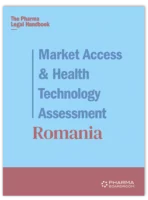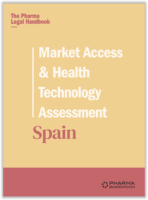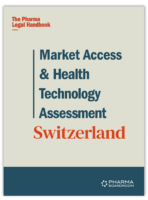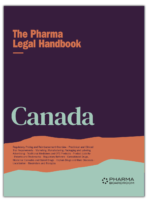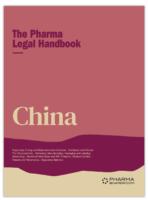Marketing, Manufacturing, Packaging & Labelling
Corral Rosales / Ecuador
1. What is the authorization process for the marketing of new drugs, biologics, medical devices, over-the-counter medications, and other medicinal products?
The authorization process for marketing new drugs, biologics, medical devices, OTC, and other medicinal products is through a marketing authorization as detailed in question 3 of Chapter 1.
2. What is the authorization process for the marketing of generic versions of these products?
The authorization process and requirements for marketing generic versions are the same; the only difference is the labeling requirements.
3. What are the typical fees for marketing approval?
- Official fees for foreign manufactured pharmaceuticals USD 2,258.41
- Official fees for locally manufactured pharmaceuticals are USD 904.34
- Official fees foreign manufactured generics USD565.21
- Official fees for locally manufactured generics are USD 510.51
- Official fees for generic pharmaceuticals included in the basic pharmaceuticals chart USD452.17
4. What is the period of authorization and the renewal process?
A marketing authorization for a pharmaceutical or medical device is valid for five years. The automatic renewal proceeding applies to products that have not been subject to suspension by the Health Authority during their period of validity and have not had changes or modifications in their intended use, quality, safety, and efficacy.
The marketing authorization holder must file an automatic renewal request at least ninety (90) days before the health registration’s expiration date.
The marketing authorization is renewed within 15 working days for five years.
5. What are the requirements, if any, for post-approval pharmacovigilance?
The holders of a marketing authorization for medicines that are marketed in Ecuador have the obligation to:
- Notify the National Pharmacovigilance Council of all suspected adverse events that occur in the country or in another country where clinical trials are conducted and/or the product is marketed;
Maintain activity in the e-reporting platform.
- Keep a detailed record of all suspected adverse events that occur in the country or in another country where clinical studies are conducted and/or the product is marketed;
- Submit safety reports every six months for new medicines (new API in Ecuador), which will allow the rectification or ratification of indications, contraindications, and adverse effects and obtain relevant information on the safety and therapeutic efficacy of the product. When a negative response is detected that exceeds the established safety limits, it must be reported immediately to the National Pharmacovigilance Council;
- Implement modifications in the technical sheet, the labeling, and the prospectus or insert them as ARCSA requires.
The establishments of medical devices and in vitro diagnostic biochemical reagents for human use that produce, import, export, distribute, market, store, dispense, and sell such goods have the following obligations:
- Collaborate with the National System of Technological Surveillance to identify, prevent, and notify ARCSA about the risks associated with medical devices;
- Notification of any suspected adverse events and adverse incidents to the National Pharmacovigilance Council;
- Keep a detailed record and a physical or digital file system of all suspected adverse events and incidents for at least five years.
- Continuous staff training in technological surveillance.
Additional obligations for the holder of the marketing authorization are established in Art. 26 in ARCSA Resolution 020-2016.
6. Are foreign marketing authorizations recognized?
Homologations are allowed for medicines, which means official recognition of the marketing authorization granted by health authorities of the countries whose regulatory agencies for medicines have been certified by the Pan American Health Organization (PAHO) / World Health Organization (WHO) as Regional Reference Authorities, as well as those marketing authorizations granted by the health authorities of the United States of America, Canada, Australia, Japan, the European Medicines Agency (EMA) and the Ministry of Food and Drug Safety of the Republic of South Korea. This list is updated periodically by ARCSA.
For a homologation to be approved in medicines, it must originate in the countries mentioned above, be part of the basic medicines required by the country (National Table of Basic Medicines), and have not been registered in the country or have less than five records of the country’s active principle, concentration, and pharmaceutical form.
LIST OF APPROVED COUNTRIES FOR THE HOMOLOGATION PROCESS
| REGULATION |
AGENCY |
COUNTRY |
OBSERVATIONS |
| Regulatory agencies qualified by the PAHO/ WHO | INVIMA, ANVISA, ANMAT, COFEPRIS, COCMED |
Colombia, Brazil, Argentina, Mexico, Cuba |
Marketing authorization or its equivalent |
| United States of America | FDA | United States of America | Marketing authorization or its equivalent |
| Canada | Health Canada | Canada | Marketing authorization or its equivalent |
| Australia | Therapeutic Goods Administration | Australia | Marketing authorization or its equivalent |
| Japan | Pharmaceuticals and Medical Devices Agency | Japan | Marketing authorization or its equivalent |
| Ministry of Food and Drug Safety | Ministry of Food and Drug Safety | Republic of South Korea | Marketing authorization or its equivalent |
| European Medicines Agency (EMA) | European Medicines Agency (EMA) | All member countries of the European Community through the EMA* |
Only Certifications of Medicines issued by the European Medicines Agency (EMA) are accepted. Certifications of regular authorities of the member countries of the European Community are not accepted. |
*Member Countries of the European Medicines Agency (EMA): Belgium, Bulgaria, Czech Republic, Denmark, Germany, Austria, Croatia, Slovakia, Slovenia, Estonia, Greece, Spain, France, Finland, Ireland, Italy, Cyprus, Latvia, Lithuania, Luxembourg, Hungary, Malta, Netherlands, Poland, Portugal, Romania, United Kingdom, Sweden.
7. Are parallel imports of medicines or devices allowed?
Parallel imports are prohibited in Ecuador since marketing authorization is required to import, sell, manufacture, and import and export pharmaceuticals and medical devices.
8. What are the restrictions on marketing practices such as gifts, sponsorships, consultancy agreements, travel and entertainment, or other incentives for healthcare organizations and individual medical practitioners?
The promotion of medicines and medical devices must be made available to health professionals authorized to prescribe them through a pharmaceutical sales representative only for non-controlled products. During these visits, it is forbidden to grant or offer gifts, prizes, economic incentives, trips, and similar by pharmaceutical establishments dedicated to manufacturing, storing, distributing, commercializing, and dispensing medicines generally, processed natural products of medicinal use, and homeopathic medicines.
Sponsoring scientific, sporting, cultural, and other similar events under the name of medicines in general, natural medicinal products, homeopathic medicines, and medical devices is forbidden. Pharmaceutical sales representatives are also prohibited from all public health services.
9. How is the manufacturing of medicines and devices regulated and by which agencies?
The National Agency for Regulation, Control, and Sanitary Surveillance (ARCSA) enforces the regulatory framework for medicines and medical devices.
Arcsa controls the permissions and good manufacturing certificates; they can inspect the permissions and good manufacturing certificates at any time to ensure the quality of products.
10. Are local manufacturing requirements compatible with Good Manufacturing Practices (GMPs) as defined by the US Food & Drug Administration (US FDA) and/or the European Medicines Agency (EMA)?
In Ecuador, the certificate of GMP is granted by ARCSA after complying with the requirements established in the local GMP Regulations for Pharmaceutical Laboratories, which is based on Report 37 of the World Health Organization.}
Indeed, all GMPs must be recognized on the authority platform.
11. What is the inspection regime for manufacturing facilities?
ARCSA is empowered to make on-site visits at any time to inspect premises and verify compliance and can initiate ex-officio legal proceedings to sanction non-compliance. Ultimately, these legal proceedings can result in fines, seizures, the revocation of the marketing authorization, and the closing of facilities. GMP, stability, labeling standards, and all other applicable provisions must be complied with. The marketing authorization holder must have a program to recall and destroy products that do not meet quality standards.
GMP inspections will be carried out by qualified technical personnel from ARCSA, and eventually, depending on the case, advisors with a specialized technical background but without voting rights can participate.
12. Are manufacturing facilities open for inspection by foreign inspectors or third-party inspectors as authorized by the FDA/EMA?
Inspections are performed solely by ARCSA.
13. What are the requirements for storage, packaging, and handling of medicines and devices and their constituent components?
The main requirement is the Good Storage, Distribution, and Transportation Practices (GSP/GDP/GTP) Certificate issued by ARCSA.
To obtain it, the company must comply with the following:
- a. Legal status
- Legal representative;
- Equipment and facilities that correspond to the activities developed.
- Operation permit issued by ARCSA.
- Technical advice from a Biochemical Pharmacist with an employment contract.
- Documentation describing the functions and responsibilities of the staff in the pharmaceutical establishment according to the organization chart.
- Standard Operating Procedures (SOPs) according to the activities developed.
- Technical documentation of all activities.
To obtain the GSP/GDT/GTP certificate for an establishment that outsources Storage, Distribution, and/or Transport, the company must comply with the following:
- The contract between the establishment and the company.
- List of products.
- Letter of application.
14. What information must be included in medicine and device labeling?
Medicines in general:
- Name of the product.
- Generic name (DCI)
- Pharmaceutical form.
- Container net content expressed in the International System of Units (SI, from the French Le Système International d’Unités)
- Qualitative-quantitative formula.
- Administration routes (they may be cut off except in injectable products, ovules, and vaginal pills).
- Batch number or code.
- Pediatric use if the product requires it.
- Conservation temperature.
- Manufacturer’s name, city, and country (if it operates under another license, control, and other forms of responsibility or has packaging companies other than the manufacturer, the name must be stated. It is possible to omit this in the internal packaging and place only the logo).
- Date of manufacture and expiration.
- Marketing authorization number.
- m. Sales specification:
- OTC.
- Under medical prescription.
- Under controlled prescription.
- Restricted circulation (may be omitted in the inner labeling)
- Sales price (PVP)
All labeling information must be clear and in Spanish.
In the case of the medical samples, the inner and outer labels must include MEDICAL SAMPLE SALE PROHIBITED.
Generics: In the case of generics, including the generic name in capital letters, the color red, Pantone Red 032, and a size 20% larger than the product’s brand name is also mandatory.
Medical Devices:
- Commercial name of the product;
- Container or packaging contents;
- Use indications, where appropriate;
- Warning and precautions of use; the use of symbols is permitted;
- Storage conditions, the use of symbols is permitted;
- Manufacturer’s name, city and country;
- Manufacturing locations, where appropriate,
- Expiration date, where appropriate;
- Shelf life, where appropriate;
- Storage temperature, where appropriate;
- Batch number/series;
- Marketing authorization number;
- Sales price (PVP);
- Legends; the use of symbols or images is permitted when appropriate:
- “Antes de usar este producto, ver inserto/manual de uso adjunto” for those medical devices that require the inclusion of the legend. ;
- “Estéril,” for products that require it; 3. “Producto desechable o no reusable,” for non-reusable sterile medical devices;
- “Proteger de la luz,” when applicable.
The label for medical devices may be in English or Spanish. ARCSA reserves the right to request all relevant information in Spanish.
15. What additional information may be included in labeling and packaging?
a. For OTC, the label shall include:
Warning: “If symptoms persist, consult your doctor.”
b. For medical samples, labels must declare:
“Medical Sample, sales prohibited”.
c. Other information; using images or symbols description, where appropriate.
“Medical Sample, sales prohibited.”
- For medical device information, use images or symbol descriptions, where appropriate.
Example.
- “Protect from light”.
- “This product should not be administered during pregnancy or when its existence is suspected.”
16. What items may not be included in labeling and packaging?
Slogans such as “the greatest choice,” “the most frequently recommended,” “the best,” “totally reliable,” and “the most effective” are not scientifically verifiable.
17. What are the restrictions and requirements for the marketing and advertising of medicines and devices?
Goods that require a prescription cannot be advertised.
General publicity for OTC medicines and devices is possible with prior authorization from the ARCSA.
The advertisement must indicate the product’s therapeutic indications or uses. The advertising content should contrast its color with the background in audiovisual and printed media (such as brochures, flyers, and leaflets).
The advertising permit will be valid for six months under the conditions on which it was approved.
Publicity restrictions are:
- Offensive comparisons
- Promote the indiscriminate use of the product
- Include underage’s
- Use of censored images.
18. Where can medicines and devices be sold or delivered? Can medicines and devices be sold or delivered via post?
The HL establishes that all medicines, including OTC, must be sold in authorized establishments with the corresponding permits.
Medicines and devices can be delivered by entities holding the necessary permits (GSP/GDP/GTP).
19. What are the restrictions and requirements for electronic marketing and advertising via email, by internet, social media, and other channels?
The HM oversees monitoring this type of publicity and checking that they have all the corresponding permits. The HM also monitors the advertising to ensure it is within the authorization parameters. If there is a breach, the authority will give the offender five days to change the publicity. If the offender fails to comply, the advertising authorization can be suspended, and fines can be imposed.
20. May medicines and devices be advertised or sold directly to consumers?
Only OTC products can be advertised to the general public with prior approval. All medicinal goods must be sold in facilities holding the necessary permits.
ARCSA permanently controls all aspects of medicines and medical devices.
21. How is compliance monitored?
It is also common for competitors to raise claims for non-compliance with ARCSA.
ARCSA can review compliance at any moment before approval of the market authorization.
22. What are the potential penalties for noncompliance?
The sanctions for not complying with the advertising rules are the suspension of advertising activities and fines and, in some instances, the temporary or definitive closure of the establishment, including the revocation of the marketing authorization.
In addition, if the breach of the advertising rules deceives consumers and generates a competitive advantage, the Superintendence for Market Power Control (SCPM) may impose a fine of up to 10 % of the infringing party’s total turnover in the fiscal year preceding the fine.














